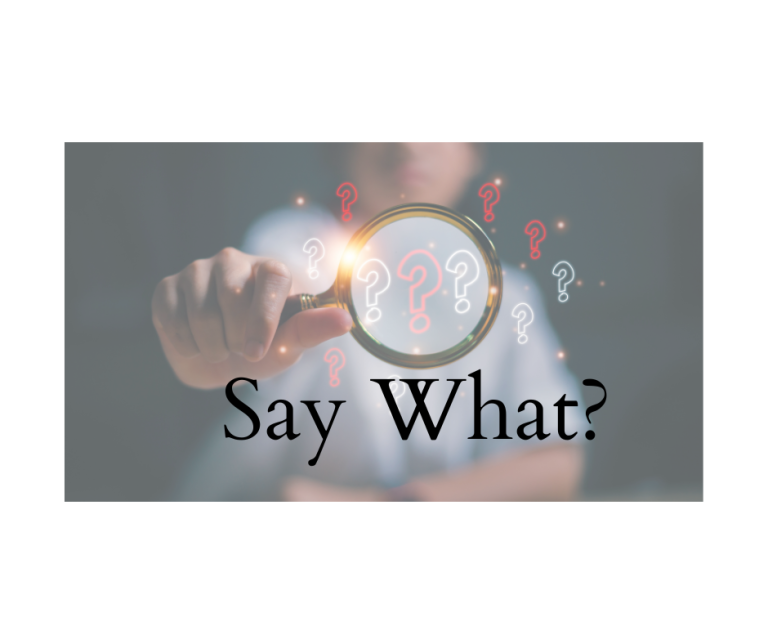Semicolons: Commonly Misused Bits of Punctuation
The semicolon is the most commonly misused punctuation mark. Bryan Garner (A Dictionary of Modern American Usage) calls the semicolon a “supercomma” because it’s more than a comma.
If you can remember these three uses for a semicolon, you will be a super semicolon user.
- Use a semicolon to separate two independent clauses that are not joined by one of these conjunctions: for, and, nor, but, or, yet, so (think of fanboys as an acronym to remember them all) .
Example: John was the first to cross the finish line; Bob couldn’t find it.
Using one of the conjunctions, the sentence would require a comma:
John was the first to cross the finish line, but Bob couldn’t find it.
- When adverbs like however, therefore, indeed, besides, nevertheless, are used to join two independent clauses, use a semicolon before the adverb.
Example: Bob ran five miles every day; nevertheless he couldn’t keep up with John.
- Use a semicolon to separate items in a list when the items are already separated by commas.
Example: The winners of the marathon hailed from Little Rock, Arkansas; Denver, Colorado; and Kodiak Island, Alaska.
Because a comma is required between the city and state, the city-state entities are separated by semicolons to avoid confusion and comma overload.
Be careful not to confuse a semicolon with a colon. They perform two different functions. The semicolon invites the reader to pause; the colon moves the reader forward. The colon precedes a series of elements that amplify or expand on what comes before the colon. Also make sure to use a colon only after a complete sentence, not a fragment. For example:
Incorrect: My favorite weekend activities include: sleeping in, pigging out, and cheering for the home team.
Correct: I’m looking forward to my weekend activities: sleeping in, pigging out, and cheering for the home team.
On another note, fiction writers often misuse semicolons! The most common misuse is in setting apart a phrase, and what should be used here is an em dash, such as in this example:
Incorrect: He lost his money at the slot machines; every single penny.
Correct: He lost his money at the slot machines—every single penny.
So, try hard not to misuse this tiny bit of punctuation.







“He lost his money at the slot machines—every single penny.
He lost his money at the slot machines,every single penny.
In the above sentence you can also use a coma.
You could, but it’s not set off as well as the em dash. Some of this is choice, and it’s always best to make the best choice for the context.
I’d argue that the em dash and comma have different sounds. The em dash is longer and harder, more like the semicolon. So shouldn’t it depend on the sound the writer wants? It’s amazing how often I find punctuation changes when I read a passage–or especially a chapter–aloud.
Thanks for the reminders. But I have another, related question. A recently published friend says his in-house editor has said no semicolons in dialogue. Is this a generally accepted guideline?
Quite a few agents and publishers don’t want any semicolons in fiction, anywhere. My publisher of Innocent Little Crimes has that policy and asks her authors to remove them all. Mostly because they are misused. They are more acceptable in literary fiction, and I do use them sparingly in my novels when they really are the best choice. But writing correctly should not be influenced primarily by the way an author thinks a bit of punctuation sounds. There are correct ways to structure sentences and if those rules are ignored, often the meaning changes, and that’s a problem. The idea of something having a “sound” is subjective, and so if you base your writing on how you think something sounds, there is no guarantee your readers will have the same interpretation as you.
I learned the hard way. eighteen months ago my manuscript went to my editor for the first time and her first instruction was to review the rules for using semi-colons and get rid of as many as possible as there were too many (341 in 320 pages). By having me go through the manuscript in such detail I did indeed learn a lot about how misused this punctuation is in fiction. There are 23 in the manuscript now. There was plenty of rewriting but as I look at it now the manuscript is tighter and the semi-colons, when used, are the perfect punctuation. Your list and examples are very similar to those my editor used to illustrate when the semi-colon should be used. Thanks for the timely reminder, Susan. I just finished looking over the first two thirds of my next manuscript (written before I learned the error of my writing habit). I took out a lot of semi-colons over the past weeks. The new material I have added does not have semi-colons. If I type one I go back to reread the sentences around it and fix it immediately. Awareness of our tendencies is one of the steps to becoming better writers. These little reminders are needed. Thanks.
Oh, I need to print this out, keep it on my wall. I’m sure I’ve abused semi-colons many times; however, I’m always striving to be better!
Thanks!
Well, the book is now out! So you don’t have to print it out. You can keep the book right on hand for easy referral! See the link to the right of these comments for Say What? It’s a compilation of three years’ posts from this column, and more. Enjoy!
I have cited herea portion of your write up. “Also make sure to use a colon only after a complete sentence, not a fragment. For example:
Incorrect: My favorite weekend activities include: sleeping in, pigging out, and cheering for the home team.
Correct: I’m looking forward to my weekend activities: sleeping in, pigging out, and cheering for the home team.”
You have used a column (:) after “For example”, which I believe is not a complete sentence.
Please clear my confusion.
You’re good and clear.